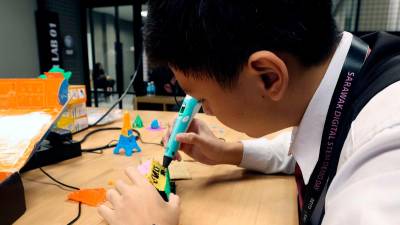PETALING JAYA: Rising enrolment in science, technology, engineering and mathematics (STEM) subjects in Malaysian schools may signal progress towards long-standing policy targets, but experts warn the labour market is not ready to absorb the growing number of science and technology graduates, risking a worsening underemployment problem.
Universiti Malaya employability analysis expert Dr Diana Abdul Wahab said the rationale for prioritising STEM remained strong, particularly in high-demand fields such as artificial intelligence (AI), data analytics and cybersecurity.
“The Malaysian government has invested billions into digital transformation initiatives, creating thousands of new tech jobs. Furthermore, the country’s engineer-to-population ratio of 1:170 is considerably lower than the 1:100 ratio seen in developed nations, highlighting an urgent need for more engineering professionals. But a numerical target alone is insufficient without ensuring the skills developed align with high-growth sectors,” she said.
She cited Malaysian Employers Federation data showing that 70% of graduates were in low- or semi-skilled jobs, with many working outside their fields of study.
Diana added that the policy’s binary “STEM versus arts” framing was outdated, pointing to a 2024 graduate employability study by the Higher Education Ministry which found that applied arts disciplines such as accountancy and business achieved among the highest graduate employability rates.
“This challenges the idea that STEM alone is the key to career success,” she said.
She noted Singapore’s adoption of the STEAM model, which integrates arts into STEM to encourage creativity and design thinking alongside technical skills.
“This is not a rejection of STEM but an enhancement of it,” she said, warning that outdated, passive teaching methods in Malaysia continued to limit students’ higher-order thinking skills regardless of stream.
Universiti Malaysia Kelantan industrial relations expert Prof Dr Balakrishnan Parasuraman shared similar views, saying the government’s prioritisation of STEM aligned with the nation’s shift towards high-tech industries such as AI, engineering, biotechnology and agribusiness.
While supporting the 60:40 STEM-to-arts enrolment policy target, Balakrishnan cautioned that the increase in STEM graduates must be matched with the creation of high-value jobs.
“Many engineers end up as Grab drivers because of limited career development. We must grow high-tech industries and transform SMEs into semi-skilled or high-skilled sectors so graduates are in demand. Otherwise, we only invest in training them, but they leave because the opportunities are better and larger in number overseas,” he said.
Balakrishnan stressed that non-STEM roles remained critical, particularly in industries where technical and non-technical skills were integrated.
“Digital marketing, TikTok and creative content are now major business areas. But even these need the integration of STEM and arts. Engineers make products, arts graduates market them. Everything is interlinked.”
He called for a coordinated employability policy led by the prime minister and involving the Education, Higher Education and Human Resources ministries.
“We must reform the labour market, ensure employability preparation for both streams and give students a chance. Don’t reject them without giving an opportunity.”
In a written reply in Parliament to Datuk Dr Ku Abd Rahman Ku Ismail (PN–Kubang Pasu) on Aug 5, the Education Ministry said 50.83% of Form Four students were in the STEM stream in 2024, up from 45.73% in 2023, describing it as a positive step towards the 60:40 target.
The ministry said it would continue to strengthen STEM education through initiatives to attract more students, positioning it as key to producing a skilled and competitive workforce.
